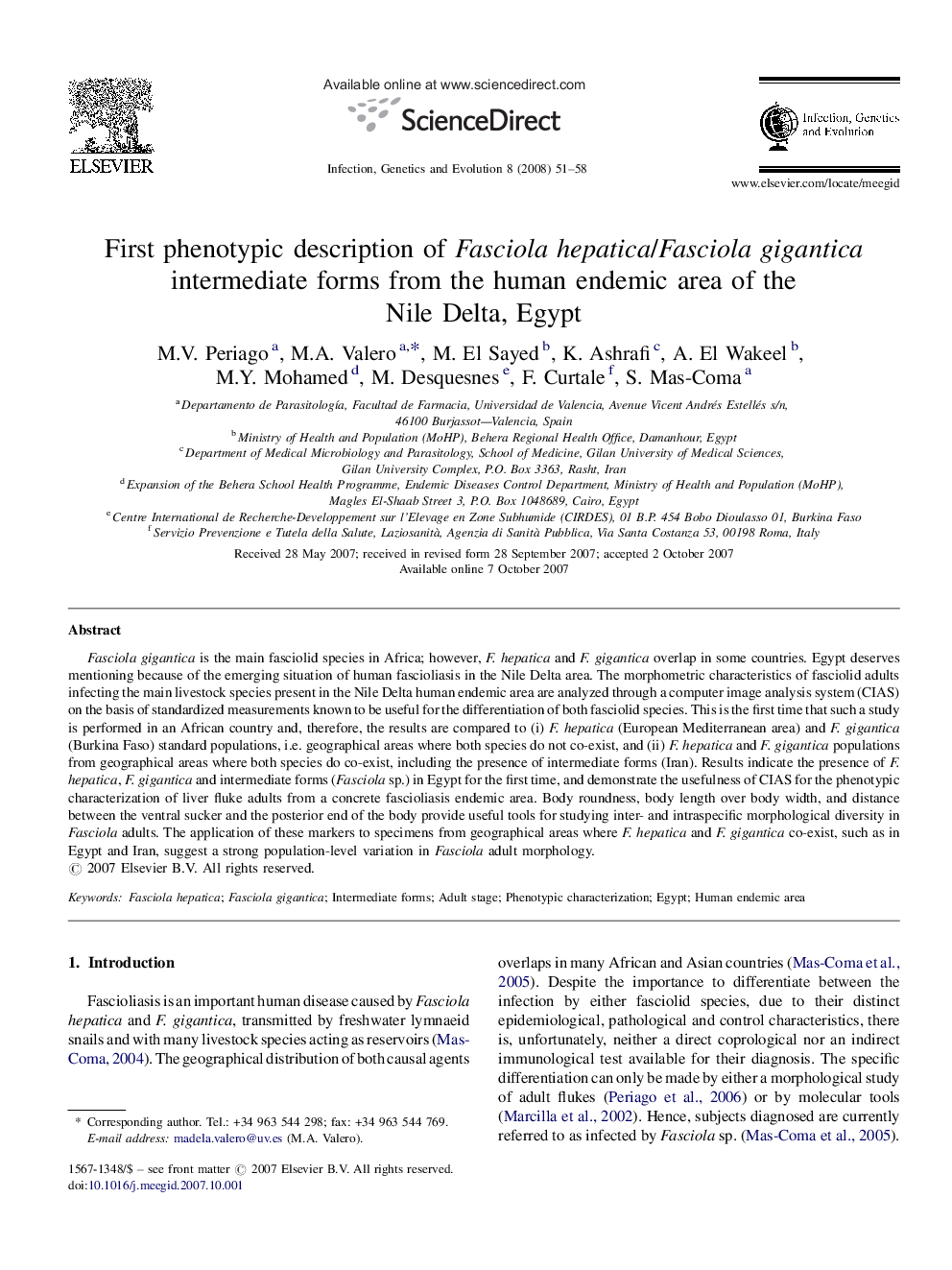| کد مقاله | کد نشریه | سال انتشار | مقاله انگلیسی | نسخه تمام متن |
|---|---|---|---|---|
| 2823480 | 1161390 | 2008 | 8 صفحه PDF | دانلود رایگان |

Fasciola gigantica is the main fasciolid species in Africa; however, F. hepatica and F. gigantica overlap in some countries. Egypt deserves mentioning because of the emerging situation of human fascioliasis in the Nile Delta area. The morphometric characteristics of fasciolid adults infecting the main livestock species present in the Nile Delta human endemic area are analyzed through a computer image analysis system (CIAS) on the basis of standardized measurements known to be useful for the differentiation of both fasciolid species. This is the first time that such a study is performed in an African country and, therefore, the results are compared to (i) F. hepatica (European Mediterranean area) and F. gigantica (Burkina Faso) standard populations, i.e. geographical areas where both species do not co-exist, and (ii) F. hepatica and F. gigantica populations from geographical areas where both species do co-exist, including the presence of intermediate forms (Iran). Results indicate the presence of F. hepatica, F. gigantica and intermediate forms (Fasciola sp.) in Egypt for the first time, and demonstrate the usefulness of CIAS for the phenotypic characterization of liver fluke adults from a concrete fascioliasis endemic area. Body roundness, body length over body width, and distance between the ventral sucker and the posterior end of the body provide useful tools for studying inter- and intraspecific morphological diversity in Fasciola adults. The application of these markers to specimens from geographical areas where F. hepatica and F. gigantica co-exist, such as in Egypt and Iran, suggest a strong population-level variation in Fasciola adult morphology.
Journal: Infection, Genetics and Evolution - Volume 8, Issue 1, January 2008, Pages 51–58